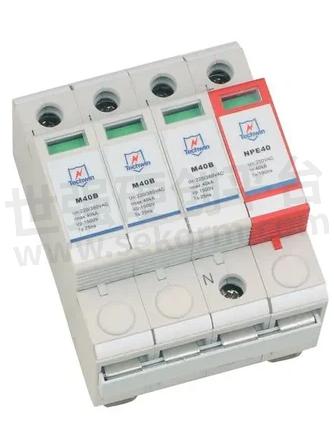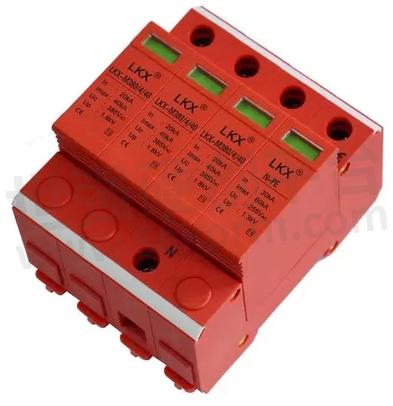What‘s the Differences Between Lightning Protection Modules And Surge Protectors?

The lightning protection module is used to discharge lightning current and is usually used for the safety protection of electrical equipment in the power system.
The role of the lightning protection module is to protect various electrical equipment in the power system from being damaged by lightning overvoltage, operating overvoltage, and power frequency transient overvoltage. The types of Lightning Protection Modules mainly include protection gaps, valve-type lightning arresters, and zinc oxide lightning arresters. The protection gap is mainly used to limit atmospheric overvoltage and is generally used for the protection of power distribution systems, lines and substation incoming lines. Valve-type lightning arresters and zinc oxide lightning arresters are used for the protection of substations and power plants and are mainly used to limit atmospheric overvoltage in systems of 500KV and below. In the ultra-high voltage system, it will also be used to limit the internal overvoltage or as a backup protection for the internal overvoltage.

图 1
Rurge Protector
A surge protector, also called a lightning protector, is an electronic device that provides safety protection for various electronic equipment, instruments, and communication lines. When the electrical circuit or communication line suddenly generates a peak current or voltage due to external interference, the surge protector can conduct the shunt in a very short time, so as to avoid the damage of the surge to other equipment in the circuit.
Surge protector, suitable for AC 50/60HZ, rated voltage 220V/380V power supply system, to protect against indirect lightning and direct lightning effects or other transient overvoltage surges, it is suitable for surge protection requirements in family residences, tertiary industries, and industrial fields.

Fig.2
Products Difference
Lightning protection modules and Surge Protectors are both important parts of electronic equipment protection, but they have the following differences:
1. Different functions: Lightning protection modules are usually used to prevent lightning or static interference, and can effectively absorb and dissipate overvoltage shocks to protect equipment safety. The surge protector is mainly used to prevent high-voltage surge interference in the line, and can cut off the surge current in a very short time to ensure the normal operation of the equipment.
2. The working principle is different: the lightning protection module is usually composed of gas discharge tubes, metal oxide varistors, diodes and other components, which can quickly respond to the situation of excessive voltage and disperse the power to the ground wire to protect the equipment. The surge protector uses fast-switching elements, such as TVS transient suppression diodes, resistive elements, etc., which can quickly respond to voltage mutations and high-frequency surges, and guide the surge current to the ground to protect the equipment.
3. Different installation methods: The lightning protection module is usually installed inside the device and can be directly connected to the device. The surge protector is usually installed at the input or output of the equipment, and connected to the equipment through the line.
To sum up, although both lightning protection modules and surge protectors are important devices to protect equipment safety, due to their different functions and working principles, their application scenarios and installation methods are also different, and they need to be selected according to specific needs.
- +1 Like
- Add to Favorites
Recommend
- Selection Of Lightning Protection Devices For Communication Lines
- YINT‘s Telephone Signal and Other Communication Lightning Protection Solutions
- Managing EMI and Lightning Strike Protection in Aircraft with CHO-SHIELD® 2002
- PCB Design Anti-interference Measures
- IoT Router Lightning Protection and Industrial Surge Protector Solutions
- Improving Performance of Surge and Lightning Protection Circuits with Current Limiting Devices
- YINT‘s Gas Discharge Tube for Base Station Communication Network Port (RJ45) Lightning Protection Solution
- A 12V DC Lightning Protection Solution from Yint
This document is provided by Sekorm Platform for VIP exclusive service. The copyright is owned by Sekorm. Without authorization, any medias, websites or individual are not allowed to reprint. When authorizing the reprint, the link of www.sekorm.com must be indicated.
















































































































































































































































































































































































































































































































































































































































































































































































































































